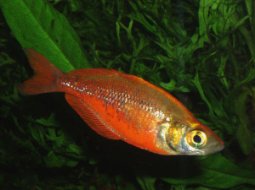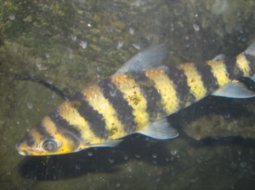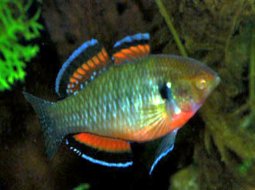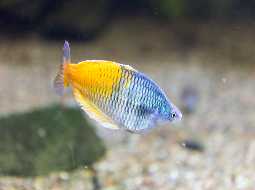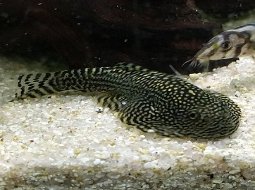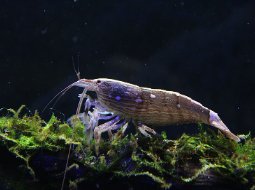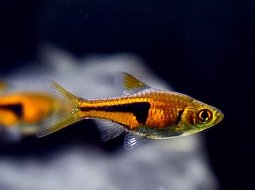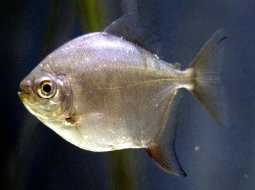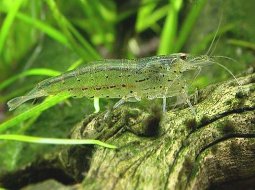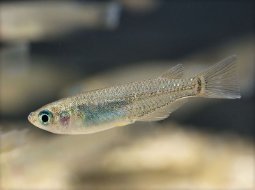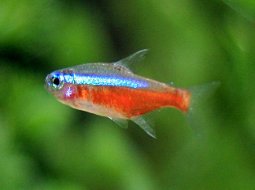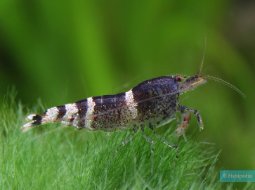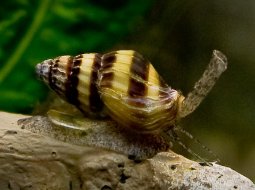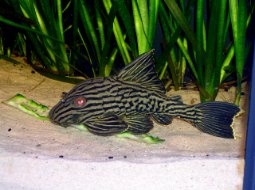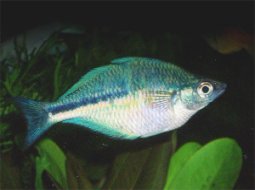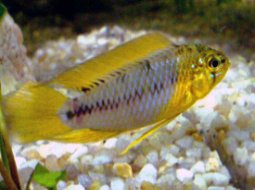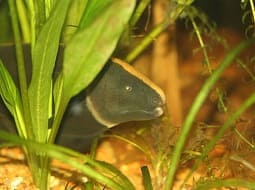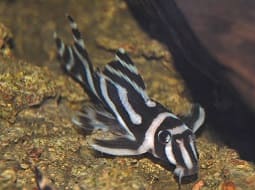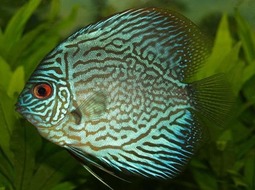
Loading Aqualapp ...
Care and Compatibility of Blue Acara - Satanoperca daemon
Introduction
The Satanoperca daemon, also known as Blue Acara or Demon Eartheater, is a species of cichlid native to South America, particularly the basins of the Amazon and Orinoco rivers. It is characterized by its bluish coloration and spotted pattern on the body. Males are usually larger and display more intense colors than females. They are peaceful and territorial fish, so it is recommended to keep them in groups and in sufficiently large aquariums to allow them to establish their territory. They enjoy having hiding places and caves in the aquarium where they can take shelter. In terms of feeding, they are omnivorous and accept a variety of foods, including pellets, flakes, live, and frozen foods. During reproduction, they form monogamous pairs and actively care for and protect their egg clutch and fry. The fry can be fed with small live foods such as infusoria and newly hatched brine shrimp.
Behavior
The Satanoperca daemon is a peaceful and territorial fish. It is recommended to keep them in groups and in sufficiently large aquariums to allow them to establish their territory. They enjoy having hiding places and caves in the aquarium where they can take shelter and explore. They are active but calm fish and often display curious and territorial behavior towards other fish that invade their space. Maintaining good water quality and performing regular water changes are key factors for their well-being.
Sexual Dimorphism
Sexual dimorphism in Satanoperca daemon is minimal and difficult to distinguish. Both males and females have a similar appearance. However, during the breeding season, they may exhibit more pronounced territorial and courtship behaviors.
Reproduction
Reproduction in Satanoperca daemon is oviparous. They form monogamous pairs and actively care for and protect their egg clutch and fry. The male and female choose a suitable location in the aquarium, usually a flat surface or a cave, to deposit the eggs. Both parents participate in cleaning and ventilating the eggs, as well as protecting the clutch from other fish. After hatching, the parents continue to protect the fry and can feed them with small live foods such as infusoria and newly hatched brine shrimp. It is recommended to provide sufficient hiding places and structures in the aquarium for the fry to take shelter and grow safely.
Aquarium Conditions
Satanoperca daemon is a freshwater fish that requires a spacious aquarium with décor including rocks, driftwood, and sandy substrate. It prefers slightly acidic and well-oxygenated water. Dense vegetation and open swimming areas are important to recreate its natural habitat. Maintaining water quality is crucial and providing a varied diet.
Feeding
The Satanoperca daemon is an omnivorous fish that accepts a variety of foods. Commercial foods in the form of pellets or flakes can be provided, ensuring a balanced diet. Live or frozen foods such as brine shrimp, daphnia, and mosquito larvae can also be included as supplements. It is important to avoid overfeeding and maintain good water quality to ensure their health and well-being.
Complexity
Caring for Satanoperca daemon can be moderately challenging. They are territorial fish and can be aggressive towards other fish of the same species, especially during breeding and territory defense. It's recommended to keep them in pairs or large groups to distribute aggression. They require a balanced diet and regular aquarium maintenance.
In case you need more help, or if you want to know into any topic related to the Satanoperca daemon (Blue Acara) and even any other species you can use the forums to ask what you need.
To do an analysis more detailed about coexistence and behavior of Satanoperca daemon (Blue Acara) use the Aquarium simulation tool, if you do this you can test different ways to combine the Blue Acara with other fishes giving the dimensions and space on you aquarium, on this way you can known the optimal configuration for keep the fishes that you want.
You can also find out the 50 species compatible with the Satanoperca daemon (Blue Acara) can live together.
Note: The parameters of the water such as PH and temperature are also used to calculate the compatibility of the species.
Compatible species (50)
Compatible (11 Species)
Compatible without any restriction
Similar Sizes (11 Species)
They can coexist if they are the same size or very similar sizes, it does not work in all cases, there may be exceptions.
With Reservation (3 Species)
Las especies territoriales por lo general pueden convivir con especies protegidas con coraza, ya que no pueden hacerles daño por su dura piel, lo que si hay que tener en cuenta es tener un acuario con dimensiones favorables para que cada pez pueda delimitar un territorio, ya que la mayoría de peces acorazados son también peces de fondo y les gusta estar buscando lugares donde ocultarse.
Compatible in some cases, it depends on the nature and personality of the fish.
Considerable size difference (16 Species)
They can coexist while they are similar in size or the size difference is not very abysmal, since as the fish grows it increases the chances of eating its partner that did not grow much.
Compatible if space is enough (9 Species)
They can coexist together if the aquarium they share is large and spacious enough for both species to feel good, as some fish may attack others to feel that they have little space and try to eliminate the competition.
Blue Acara
Satanoperca daemon
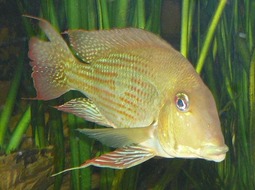
- Ph: 5 - 6.5
- Temperature (c°): 26 - 28
- Measures: 20 cm - 25cm
- Aquarium Capacity:
75 Liters - 20 Gallons - Alimentación: Carnivores, Omnivores
- Colores: Orange, Red, Yellow
- Comportamiento: Active, Peaceful, Territorial
- Habitad: American
- Morfología: Thorns or pointed
- Preferencias del Acuario: Logs, Rocks
- Tamaño: Medium
- Taxonomía: Cichlids, Fish
- Tipo de Agua: Sweet water
- Velocidad de nado o movimiento: Normal
- Zona de Nado: Swim in the middle of the aquarium

.jpg)


